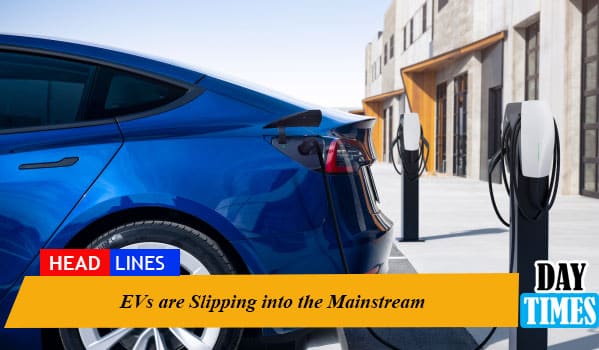What many people are waiting for is a quality, affordable electric vehicle (EV). As of April this year, most of the EV models on the market were on the luxury end of the spectrum and cost an average of $61,000, which exceeds the average price of a regular vehicle by a hefty $12,000. This kind of consideration discourages lots of consumers from going electric.
Appearances can be deceptive, though, because a 2020 study found that EV owners end up saving between $6,000 and $ 10,000 over the lifespans of their vehicles, as compared with drivers of regular cars. This takes into account, for instance, savings on fuel, repairs, and maintenance over that time period. (Maintaining an EV is cheaper for the reason that they have fewer moving parts than traditional vehicles.)In the years since that study, many cheaper EVs have entered the market and lots of traditional cars have gotten less affordable, which makes the EV cost picture look rosier still.
“Battery electric vehicles tend to come out ahead of [internal combustion engine] vehicles, on average”, says Debapriya Chakraborty of the Electric Vehicle Research Centre, referring to the issue of costs. This can actually depend on local prices of gasoline and electricity, and also the range of the vehicle in question. EVs with longer ranges have larger batteries, which is the priciest part of the machine, so an EV with a 400-mile range would probably still end up more expensive than an electric option at this point in time. By contrast, a 200-mile EV is considered very competitive in terms of overall costs.
Aside from the broader cost picture, there is good reason to believe that EVs are on their way to becoming a much more affordable, mass-market sort of product. On their March 1st investor day, Tesla said they’re now able to cut production costs by half, using more efficient factories and improved battery technology. Consumers are therefore anticipating next year’s Tesla model to set them back only $25,000 to $30,000, which beats the average cost of a new car, (at $48,763) by quite a lot.
If you have plans for CFD online trading in Tesla shares, or if you’re simply interested in EVs, join us now for a discussion of the advancements in EV manufacturing and what they might mean for consumers, not to mention the earth’s environment, going ahead.
Going Electric
Last year in August, US President Joe Biden signed the Inflation Reduction Act, which encouraged people to go electric by offering up to $7,500 in tax credits to EV buyers until the year 2032. And then, in April 2023, he gave another boost to the EV market by putting forward new, strict rules on the gas emissions allowed from US vehicles. Biden wants the carbon dioxide blown from American cars to be cut down by as much 56% in less than ten years.
His concerns are not unfounded because America’s biggest source of atmospheric pollution comes from transportation, which made up 28% of the total gases it expelled in 2021. Environmental worries are important from a market perspective because 35% of US respondents in a recent survey listed them as key in their decisions on which car to buy.
What’s Available
For this year, Tesla’s Model 3, which has a range of 272-315 miles on a single charge, comes in at a minimum of $40,240. This vehicle seats five and boasts high-level handling capabilities. Paying up to $53,240 can get you special features like superior brakes and a dual-motor system with 506 horsepower. Larger and pricier than this is the Model Y, which can seat seven and comes with options for 20-inch wheels, a white interior, and Advanced Autopilot. To get one of these, you’ll have to pay between $47,409 and $54,490. Tesla EVs may be worth their higher price tags because they rate well in terms of safety criteria.
An electric Chevrolet Bolt starts as low as $26,500, while a Nissan Leaf is good value for money at only $28,040. As prices steepen, we see the MINI Hardtop at $30,900 and Hyundai’s Kona Electric at $33,550. With respect to next year’s lower-cost options, Fisker’s PEAR SUV will cost about $29,900 and Volkswagen’s ID.2, destined for Europe, will come in at lower than 25,000 euros. Chevrolet’s electric Equinox, which could be available by this fall, will be tagged at less than $30,000 too. The market for electric compact sedans is generally on a rising trend.
Motoring Ahead
One of the ways EV makers plan to draw in more consumer cash while offering more basic vehicles (which are considered less powerful moneymakers than luxury models) is by expanding the list of optional extras. Examples include leather seats, better batteries, and high-quality stereos.
On the immediate horizon, “Everybody is watching to see where Tesla heads”, says Dan Ives of Wedbush. “That’s going to dictate pricing and competition in the market”. You can engage in online trading in Tesla share prices, whether you think they’re on the rise or on the dip, from the exclusive iFOREX trading app, which keeps you on the cutting edge of CFD financial trading.


